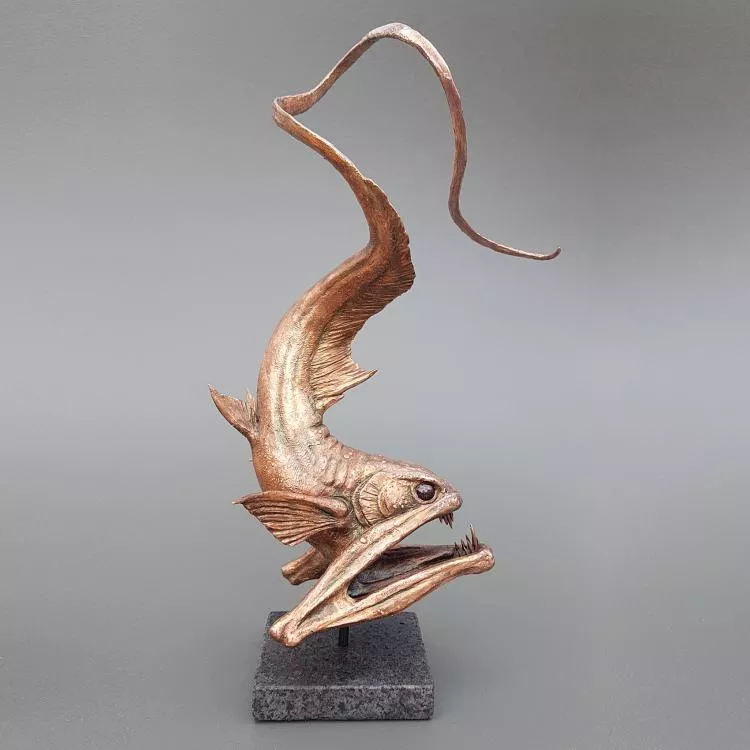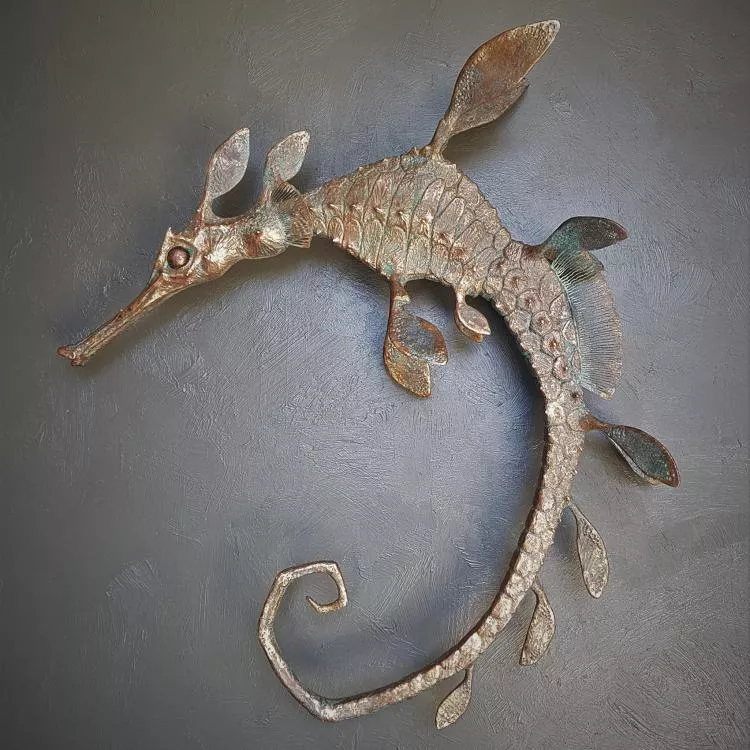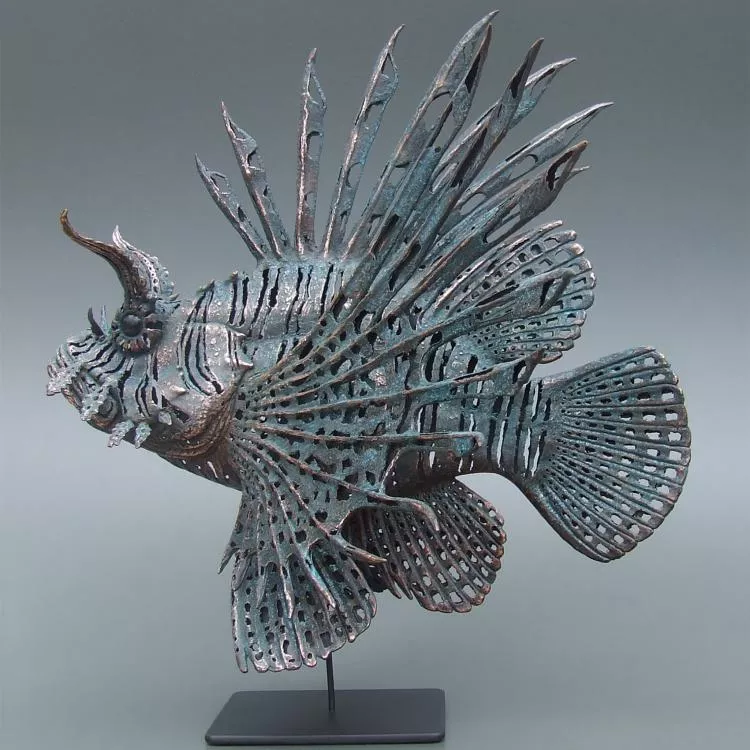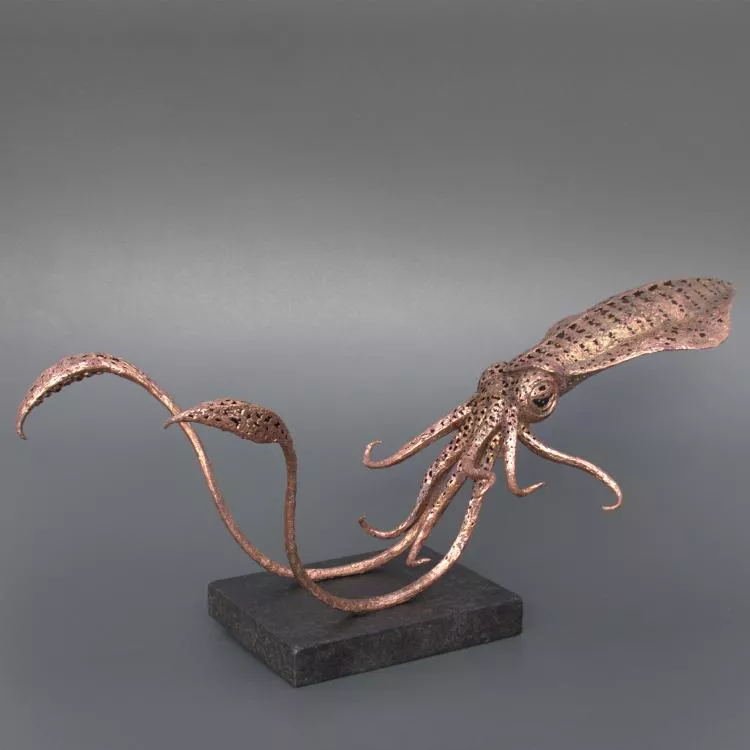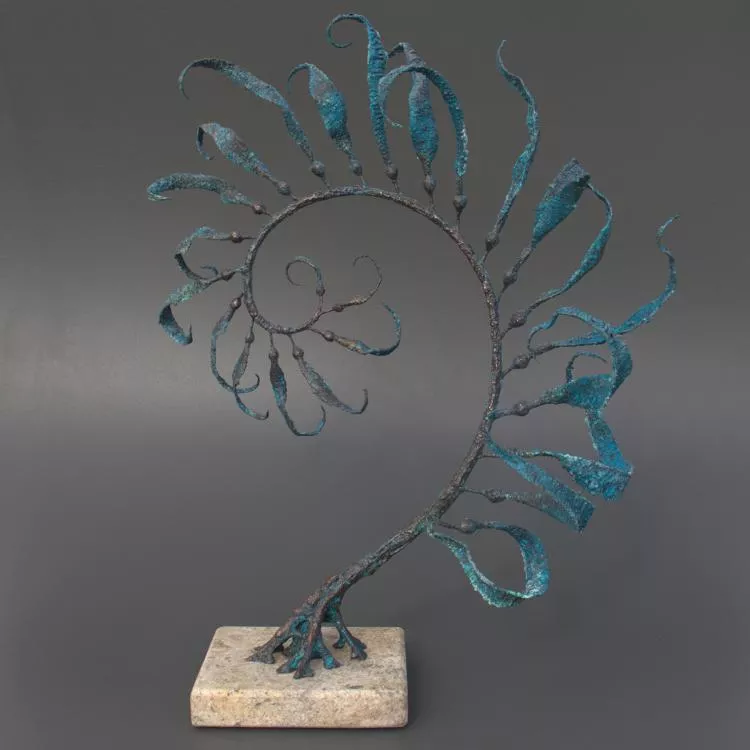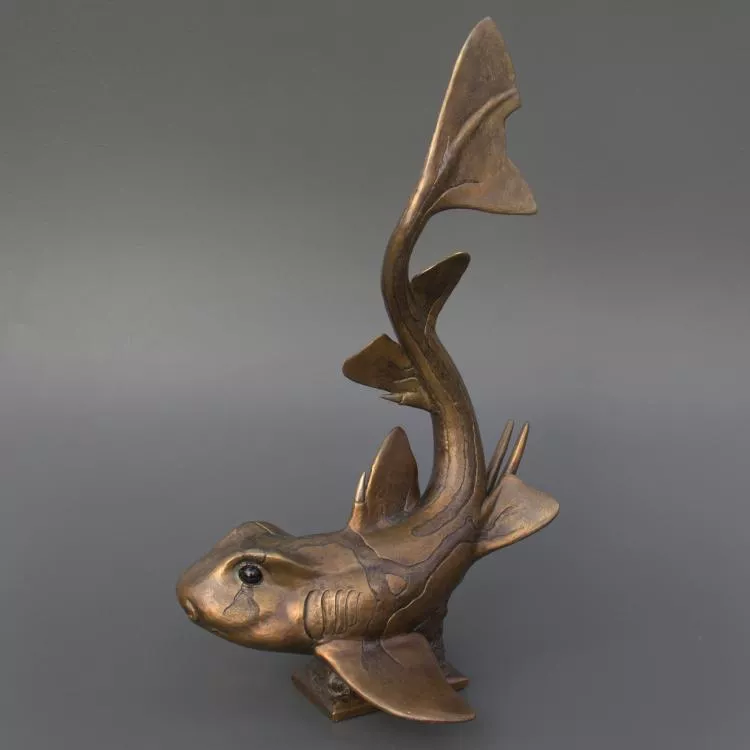British artist and avid diver Dave Clarke, currently based in South Australia, creates beautiful, detailed and dynamic patinated copper, bronze and recycled steel sculptures of marine life, which seem to flow in the liquid medium of the sea. X-Ray Mag interviewed the artist to find out more about his creative process and perspectives.
Contributed by
"Not all of my works have meaning behind them. Sometimes, I just tend to create them because the creatures have their own beauty, which I want to emulate with the hope of inspiring my fascination with them in others." — Dave Clarke
X-RAY MAG: Tell us about yourself, your background and how you became an artist.
DC: As a child, I was always drawing dragons and fish. You could always find me at lunchtime in the school library sketching instead of the playground. I was always trying to create something weird and wonderful. I grew up in Sussex, England, where I spent my childhood catching fish in the local ponds and lakes, especially the predators like pike and catfish.
I transitioned to sculpture while at art college, as it was somehow more real and had more life. I was a mannequin sculptor’s assistant for several years in London and worked for several sculpture businesses there, from wall relief sculptures to movie props at Pinewood Studios. My practice now consists of creating my own personal work for galleries and exhibitions, as well as prop-making for movies, theatre and pageants, when it becomes available.
X-RAY MAG: Why marine life and themes inspired by the sea? How did you come to these themes and how did you develop your style of sculpture?
DC: I suppose my love for creating fish came from my obsession with catching them. My love for the ocean was only realised when I moved to South Australia at 25 and lived on Kangaroo Island in South Australia for over a decade. The island was a wonderland of creatures, from southern right whales to great white sharks and leafy sea dragons—you never knew what you would come across while out fishing or diving. My style of sculpture has evolved over the years to incorporate swirls, spirals and pronounced curves to enhance the aesthetics of the piece while keeping them semi-realistic.
X-RAY MAG: Who or what has inspired you and your artwork and why? For instance, what mentors, artists, art styles or movements have influenced your artistic vision, creative process and/or development of your artwork?
DC: I am inspired by many artists from different genres, including monster creators like HR Giger, Paul Komoda, Simon Lee, Aris Kolokontes and Steve Wang, to name a few. Wildlife sculptors, such as Dylan Lewis, Beth Cavener, Nick Bibby and Ellen Jewett, have been a great influence on my work.
Instagram is also a massive inspiration to me by following people like Marcelo Johan Ogata (@bugdreamer) who posts some amazing videos of sea creatures. My interests tend to lean towards the darker side of art with the choice of creatures sometimes being the uglier the better, the deep sea being the best resource for this with its myriad of ugly/beautiful creatures.
X-RAY MAG: What is your artistic method or creative process?
DC: I have several creative methods and materials from bronze, electroformed copper, steel and thermoplastics, depending on the sculpture I want to make. For most of my sculpting career, I have created multiple editions of my works by creating moulds; but nowadays, my preference is to create one-offs. I sometimes employ a lost wax electroformed copper process, whereby I will create a creature in wax, then coat it in a conductive layer, and electroplate it in a copper bath before melting the wax out. This process creates very delicate and intricate sculptures made of 99.9 percent pure copper.
X-RAY MAG: What is your relationship to the underwater world and coral reefs? Are you a scuba diver or a snorkeler and how have your experiences underwater influenced your art? In your relationship with reefs and the sea, where have you had your favourite experiences?
DC: My relationship with the undersea world since being in Australia has been life-changing. When I first came to Australia, I got my PADI open water certificate and did several dives on the Great Barrier Reef, including an unforgettable night dive, going into caves, and seeing turtles resting and whitetip reef sharks feeding in packs.
The giant cuttlefish in Whyalla South Australia were an incredible experience, even though they were in very shallow water. I was glad to have a scuba tank so I could just lay on the bottom to blend in and observe their fascinating displays.
Shark cage diving at the Neptune Islands was another highlight. I have been lucky enough to have a southern right whale come right up to me while I was surfing on the southern coast of one of the islands and had a 4.5m great white shark attack my fishing boat motor several times.
I have also designed and built a shark-resistant exploration submarine to be towed behind a boat, which can be steered by the diver.
X-RAY MAG: What are your thoughts on ocean conservation and coral reef management and how does your artwork relate to these issues?
DC: Not all of my dives were so pleasant, as I saw firsthand the destruction caused by prawn trawlers in the Spencer Gulf near Whyalla. I had descended there for a drift dive along the bottom for a few kilometres; but where the prawn trawlers had criss-crossed the bottom, all that was left there were only small geometric shapes of pristine sea bottoms of sponges and corals.
When I was in London, I created a 6ft fibreglass silvertip reef shark to be hung by a longline hook in the London Aquarium’s Atlantic tank, to draw attention to the practice of shark finning. The sculpture was towed behind a bicycle on a custom-built trailer from London to Brussels to deliver a petition with thousands of signatures to try and end the practice.
I am always trying to make my work as sustainable as possible with the materials and processes I use, but bronze tends to be very energy intensive when the foundry and freight is considered.
X-RAY MAG: What is the message or experience you want viewers of your artwork to have or understand?
DC: Not all of my works have meaning behind them. Sometimes, I just tend to create them because the creatures have their own beauty, which I want to emulate with the hope of inspiring my fascination with them in others. Every now and then, I will create a piece with a message such as my lionfish, which was called ‘’Eat Them to Beat Them’’ when it was exhibited. This slogan is used by people in the Caribbean and the Gulf of Mexico who have been trying to curb the spread of the beautiful but invasive lionfish since around 2000, which originally come from the South Pacific and Indian oceans. Lionfish have invaded and become a major threat to native species, as they lack natural predators and can reproduce year-round, releasing 50,000 eggs every three days. It is unknown how they got there, but it is likely humans provided a helping hand.
X-RAY MAG: What are the challenges or benefits of being an artist in the world today? Any thoughts or advice for aspiring artists in ocean arts?
DC: I think now is a great time to be an artist, with the use of social media to get your work out there; and with YouTube, you can learn any process or technique. One of the challenges I find is how to narrow down on a medium and a style. Self-discipline and getting your head around the business side of art can be a struggle for many artists, myself included.
X-RAY MAG: How do people—adults and children—respond to your works?
DC: I especially like it when people seek me out, and come and visit the studio, to see firsthand how things are created. Some of their reactions then can be great, especially if they are bringing their partner to surprise them with a gift of my work. People will often send me photographs of my artworks hanging in their home or garden, which gives me great pleasure. I recently visited one of the galleries exhibiting my sculptures to drop off a new artwork, when a customer was in there talking to the gallery owner about my work, which was lovely to overhear—and she also bought the piece.
X-RAY MAG: What are your upcoming projects, art courses or events?
DC: I enter as many competitions and exhibitions as I can each year, here in South Australia. I have several upcoming shows, for which I am trying to get enough work together. I also apply for public sculpture tenders (contract bids) when they become available—so, lots of exciting things in the pipeline at the moment.
X-RAY MAG: Is there anything else you would like to tell our readers about yourself and your artwork?
DC: If you are interested in my work and my techniques, please check out my Instagram and Facebook pages where I upload videos of works-in-progress to show some ofthe creative process. The links can be found at my website at: daveclarkseculpture.com.




